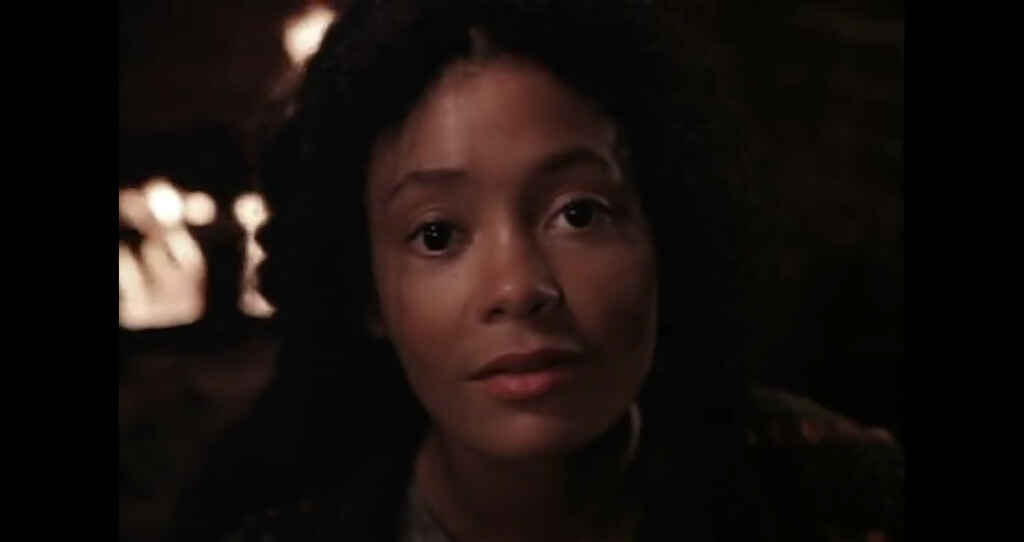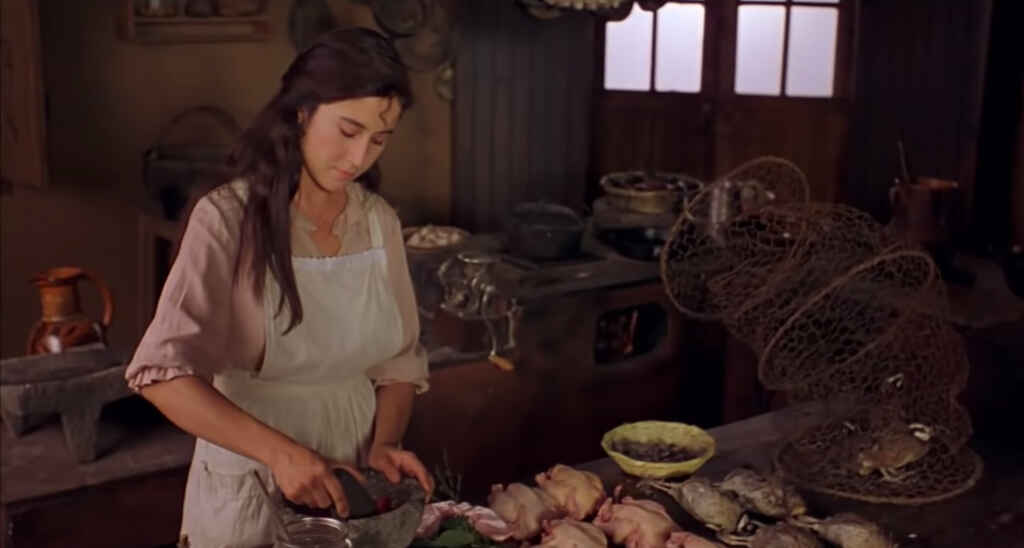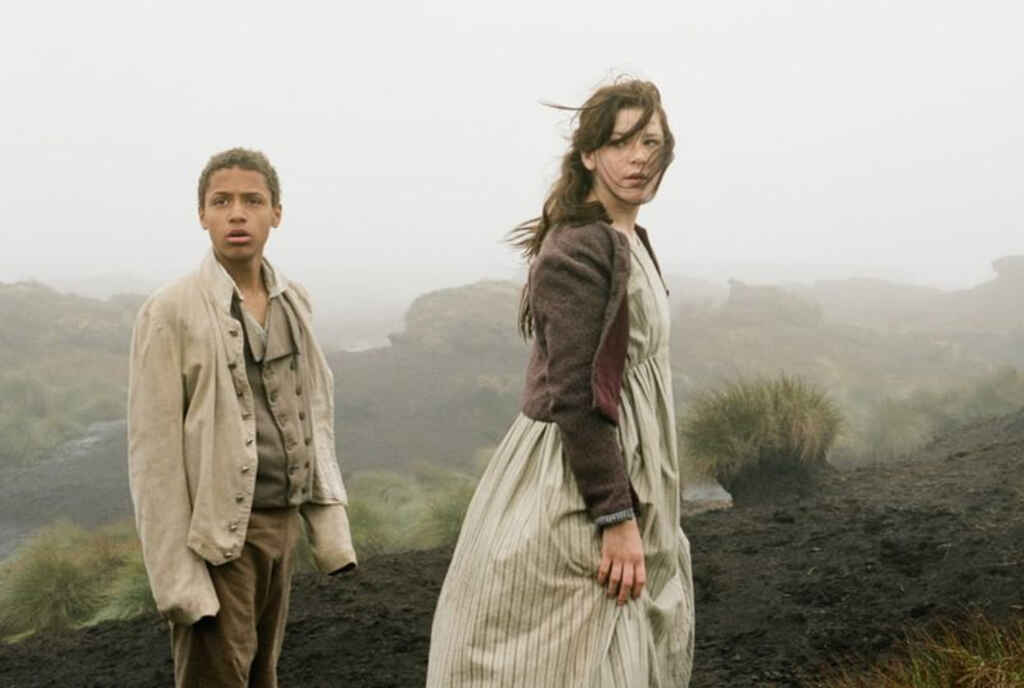Last updated on Oct 15, 2025
What Is Symbolism? Definition and Examples
Savannah Cordova
Savannah is a senior editor with Reedsy and a published writer whose work has appeared on Slate, Kirkus, and BookTrib. Her short fiction has appeared in the Owl Canyon Press anthology, "No Bars and a Dead Battery".
View profile →Symbolism is the use of real-world objects, people, ideas or situations to represent something else. From symbolism in literature and film to everyday conversations, this literary and artistic technique helps add layers of meaning and convey deeper concepts than what is possible with purely literal communication.
In this post, we’ll dive into symbolism and the effects it can create in a story — along with some classic symbolism examples in literature, art, and film that you’re bound to recognize.
Symbolism is often based on shared references
A lot of symbolism today builds on familiar images and objects. Readers and viewers will often recognize these symbolic elements from religious scripture, art, classic literature, or other well-known cultural sources. Examples of this can be found on every level of communication, from high art to memes.
Unlike metaphors, which explicitly compare one thing to another (e.g. “Time is a thief”), symbols stand on their own to represent bigger ideas. The author or speaker basically assumes that their audience shares the same cultural references as them — and this shared context allows their symbols to create meaning.
This can make it difficult for young readers or beginners — or someone who comes from a different culture — to notice and interpret symbolism in a text or piece of art. This is why art historians and scholars, like Roland Barthes, Walter Benjamin, and Jacques Derrida have devoted their whole lives to studying symbolism. But fear not; you do not have to be an academic to enjoy picking apart the use of symbols in a text! It just requires some sleuthing.
One example of a common religious and historic symbol in the western context is the white dove — a symbol for the Holy Spirit or peace in Christianity. Another one is roses, which have featured in art and texts dating as far back as 3000 BCE. Roses are a particularly “wide-ranging” symbol, and can signify anything from love and romance to power, royalty, beauty, sensuality, and mysticism.
While many symbols have a long history, symbolism tends to evolve as society and traditions change, and the origins of many common symbols are often disputed. In the case of the rose, for instance, its earliest use in art and literature can be found in Southwestern China — but many people would credit it to Greek and Roman mythology and legends, linking it with deities such as Aphrodite, Eros, and Dionysus. Meanwhile, in today’s society, the rainbow has become an almost universally acknowledged symbol of acceptance and inclusivity, stemming from its usage in the LGBTQIA+ community.
Example: Forbidden fruit in The Secret History
Trees creaking with apples, fallen apples red on the grass beneath, the heavy sweet smell of them rotting on the ground and the steady thrumming of wasps around them.
In this quote, the narrator of The Secret History is describing Hampden College, where the novel is set. This imagery alludes to the biblical concept of the forbidden fruit, symbolizing temptation and the journey into moral ambiguity that the characters will take. The presence of apples in this passage hints at how the novel will explore sin, guilt, and the loss of innocence — as is common throughout literature.
It expresses ideas through strong imagery
The point of symbolism is to capture things that are difficult to convey with straightforward writing or speech. Authors often do so by evoking the feeling of something — which doesn’t have to be culturally specific. Bold colors, eye-catching objects, dramatic events, and so on work particularly well as symbols. Generally, the stronger the image, the more clearly it conveys a feeling or idea.
Filmmakers frequently take advantage of this, crafting colorful, compelling visuals that audiences instantly clock as symbolism. While writers must take a subtler approach, that doesn’t mean textual symbolism is weaker than visual symbolism — indeed, when given masterful description, a reader’s imagination can yield the most powerful imagery of all.

FREE RESOURCE
Literary Devices Cheatsheet
Master these 40+ devices to level up your writing skills.
Note that strong imagery doesn’t always equal symbolism. Sometimes a vivid scene is just a plot point that engages the reader and moves the story along. That said, strong imagery often does mean you’ve got a symbol on your hands — as in the example below.
Example: Water and rebirth in Beloved

A fully dressed woman walked out of the water. She barely gained the dry bank of the stream before she sat down and leaned against a mulberry tree. All day and all night she sat there, her head resting on the trunk in a position abandoned enough to crack the brim in her straw hat. Everything hurt but her lungs most of all.
The fifth chapter of Beloved by Toni Morrison begins with Beloved's rebirth after her mother, Sethe, was forced to kill her as a baby. While the water itself is the symbol, it’s the image of Beloved that hits hardest: this portrait of a young woman whose lungs sting with every breath, who can't move for an entire day.
Beloved is full of striking imagery like this, but this scene is a particularly nuanced example. With the realization that she is Sethe’s lost daughter, the scene takes on even greater meaning. The water symbolizes not just Beloved’s rebirth, but also the pain of it, with her struggling lungs invoking the trauma of her past.
Symbolism can underline important themes
To work meaningfully in a story, a symbol can’t just represent any idea. It also needs to relate to the story’s overarching themes.
Take the age-old symbols of light and darkness. If you were writing an epic battle between two sides, you might connect one side to light and the other to darkness to show who’s good and who’s bad. What you wouldn’t want to do is insert imagery of darkness vs light in a story that’s really more about moral grayness or ambiguity. Indeed, symbolism should help readers interpret the themes of the story — and while it shouldn’t spell things out too heavy-handedly, it shouldn’t be confusing either.
Luckily for writers, once you know which idea(s) you want to tackle, suitable symbols should follow. And luckily for readers, writers almost never include random symbols that don’t relate to their work’s themes. So one near-foolproof way to interpret symbols is to simply think about what message the story is trying to deliver, and then look at how the author is doing that.
If you recognize a symbol, even if you’re not sure how to decipher it, you can trust that it’s important — as in the example below.
Example: Mockingbirds and innocence in To Kill a Mockingbird

Atticus said to Jem one day, “I’d rather you shot at tin cans in the backyard, but I know you’ll go after birds. Shoot all the bluejays you want, if you can hit ‘em, but remember it’s a sin to kill a mockingbird.”
Though Atticus first brings it up in the passage above, the mockingbird symbolizes more than Jem's childhood innocence. It’s a symbol for all innocence, and clearly connects to the character of Tom Robinson: a Black man wrongly accused of assaulting a white woman.
By extension, the phrase “to kill a mockingbird” relates to the immorality of hurting an innocent creature. In the book, the Ewells symbolically kill the “mockingbird” of Tom Robinson with their lies, as does the racist jury that convicts him.
Of course, when Tom is shot and killed by a prison guard, we see that for a Black man in America, murder is not just metaphorical. It’s a wrenching yet undeniably powerful sequence of events — and an excellent case study in how such symbols can connect to overarching themes.
It's a poetic way to “show, don’t tell”
Symbolism can also be used to show, rather than tell, what someone is experiencing or thinking. For those unfamiliar with this concept, it encourages subtle yet revealing descriptions rather than laying out information more plainly.
For example: “Allie was nervous during the test” is a telling statement. It gets the point across clearly and immediately — and even demonstrates how telling can be useful when the author has to knock out some important (if dry) information. But “telling” sentences don’t always engage the reader.
“Showing” the same information is often much more interesting: “Allie fiddled with her pencil, tapping it against the tabletop. Her eyes darted to the clock and she felt her palms sweating, gripping the pencil harder.” This lets us know what Allie is experiencing without quite labeling it, allowing readers to draw their own conclusions.
Symbolism adds yet another, more intriguing layer to this tactic. While all symbols help writers “show [not] tell” their ideas, some symbols are especially incisive. The following example shows how this can work.
Example: Blood and guilt in Macbeth

Out, damned spot! Out, I say! — One, two. Why, then, ’tis time to do ’t. Hell is murky! — Fie, my lord, fie! A soldier, and afeard? What need we fear who knows it, when none can call our power to account? — Yet who would have thought the old man to have had so much blood in him.
One of the most memorable scenes in Macbeth is Lady Macbeth’s frenzied speech in Act 5. “Out, damned spot!” she cries, scrubbing at her hands as if they were stained with blood — despite the fact that she has not killed anyone.
If anything, though, this makes the “blood” into an even more powerful symbol. Lady Macbeth's guilt is so extreme that this vision still haunts her. Of course, she doesn’t actually say, “I feel guilty because I forced my husband to murder the king.” Shakespeare conjures a far more compelling scene by showing her descent into blood-fueled paranoia.
Symbolism can enhance a story's emotional resonance
As you’ve probably gathered, the best symbols evoke both an intellectual and an emotional response. We feel sorrow over Beloved’s painful rebirth; angry at the destruction of Tom Robinson; a mixture of satisfaction, pity, and fear around Lady Macbeth’s guilt.
These responses tend to arise naturally, but storytellers can also intentionally choose symbols to sway readers in one emotional direction or another. For instance, say you wanted to symbolize childhood in a scene. You could have your main character walk by a park and hear children playing… or you could have them stumble upon an old, worn teddy bear with its stuffing falling out.
The more innate emotional pull an image has, the more strongly readers will feel about what it represents. Whether you’re trying to elicit sublime happiness or terrible sadness, a well-placed symbol could be the key.
Example: Food and passion in Like Water for Chocolate

Tita's blood and the roses from Pedro proved quite an explosive combination. [...] Gertrudis began to feel an intense heat pulsing through her limbs. An itch in the center of her body kept her from sitting properly in her chair.
She began to sweat, imagining herself on horseback with her arms clasped around one of Poncho Villa's men: the one she had seen in the village plaza the week before, smelling of sweat and mud, of dawns that brought uncertainty and danger, smelling of life and of death.
What better way to show emotional resonance than with a story about baking feelings into food? The symbolism in Like Water for Chocolate is admittedly none too subtle; its magical realist approach means that we can see clearly which emotion each dish represents.
But as we’ve touched on, sometimes the clearest symbols have the greatest impact. This is certainly true of the scene in which Tita’s sister, Gertrudis, is consumed by lust after eating quail with rose petal sauce — a meal infused with Tita’s erotic thoughts of her other sister’s husband, Pedro.
This symbol is particularly potent given that Pedro brought Tita the roses in the first place. Tita pours all her sexual frustration into the meal, and in this symbolic scene, we feel her love and lust for Pedro almost as powerfully as Gertrudis does.
And it can make the most obscure story relatable
Again, keep in mind that many symbols in literature are universal. Indeed, reviewing our recent examples of symbolism, each one uses an intuitive association (water with rebirth, blood with guilt, etc.) to coax readers in the right direction.
So for authors, symbolism is not only an effective literary device, but also a way to ensure that readers connect with the story. They might not have lived in the same setting or experienced the same things as your characters — but they can still recognize the universal symbolism of a specific situation when done well.
Indeed, at the end of the day, interpreting and even using symbols as a writer isn’t all that complicated. Go with your gut, and when in doubt, remember you can always revisit the classics for confirmation of “quintessential” symbols over time.
Example: Nature and wildness in Wuthering Heights (and others)

My landlord halloed for me to stop ere I reached the bottom of the garden, and offered to accompany me across the moor. It was well he did, for the whole hill-back was one billowy, white ocean; the swells and falls not indicating corresponding rises and depressions in the ground: many pits, at least, were filled to a level; and entire ranges of mounds, the refuse of the quarries, blotted from the chart which my yesterday's walk left pictured in my mind.
Speaking of the classics, let’s look at our last example: nature and wildness in Wuthering Heights. This one is so well-known that it even features in an episode of Friends — Phoebe noting that the story is set “on these really creepy moors,” which symbolize “the wildness of Heathcliff’s character.”
And Wuthering Heights isn’t the only story to relate natural wilderness to human turmoil and ferality. The Scarlet Letter, published a few years later, implies a similar connection with Hester’s daughter Pearl — forced to live near the woods on the edge of town, Pearl becomes increasingly unruly. A better-known example might be Lord of the Flies: the longer the boys remain on the island, the more primitive they become.
This is one of symbolism’s best qualities: creators can build upon earlier works to develop symbols and make them even more powerful. Which is exactly why the greatest symbols only become richer over time!
On that note, we hope this guide has helped you better understand symbolism in literature — to both identify symbols in future reading and use them more effectively in your own work. No matter what the symbols in question are, you’ll have all the tools you need to work with them. (But again, just to be safe, steer clear of those creepy moors.)








